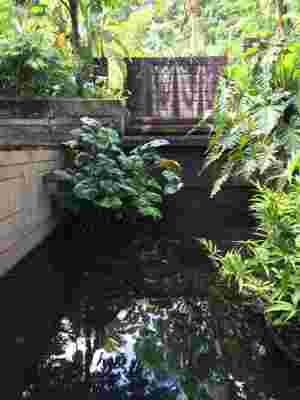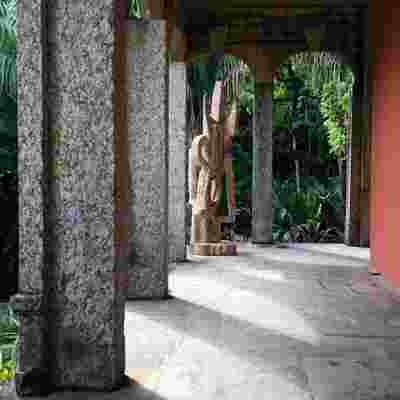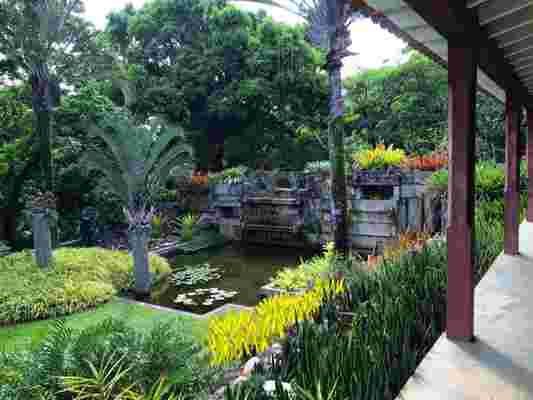On the outskirts of Rio de Janeiro, camouflaged almost entirely by the region’s vibrant greenery, we come upon the Sitio Roberto Burle Marx—the former home and studio of the great Brazilian landscape architect (1909–1994). Comprising the Sitio (a banana plantation turned nursery), a 16th-century chapel of Saint Anthony, and a main house surrounded with pools and salvaged architectural fragments, the property resembles a lost ruin in the thick jungle.
Rather than follow the current fashion, which was to copy and import European gardens to the jungle, in the 1950s Burle Marx pioneered a new sort of tropical garden, making use of Brazilian plants that had previously been ignored by South Americans. For years he traveled the country to collect more than 3,500 species for his nursery and botanical garden.
Also a painter, Burle Marx organized his gardens in the same way he might decorate a canvas—stone pavements of varying textures and colors weave through bold brushstrokes of multicolor tropical plants. Like the biomorphic paintings and sculptures of Jean Arp and Jean Miró, Marx extended the modernist vocabulary of the art world to his landscapes, a groundbreaking approach that attracted the attention of Oscar Niemeyer, with whom Burle Marx worked on a number of projects.
Discover my visit through Roberto Burle Marx’s artfully cultivated tropics.



Plant identification by landscape architect Raymond Jungles
